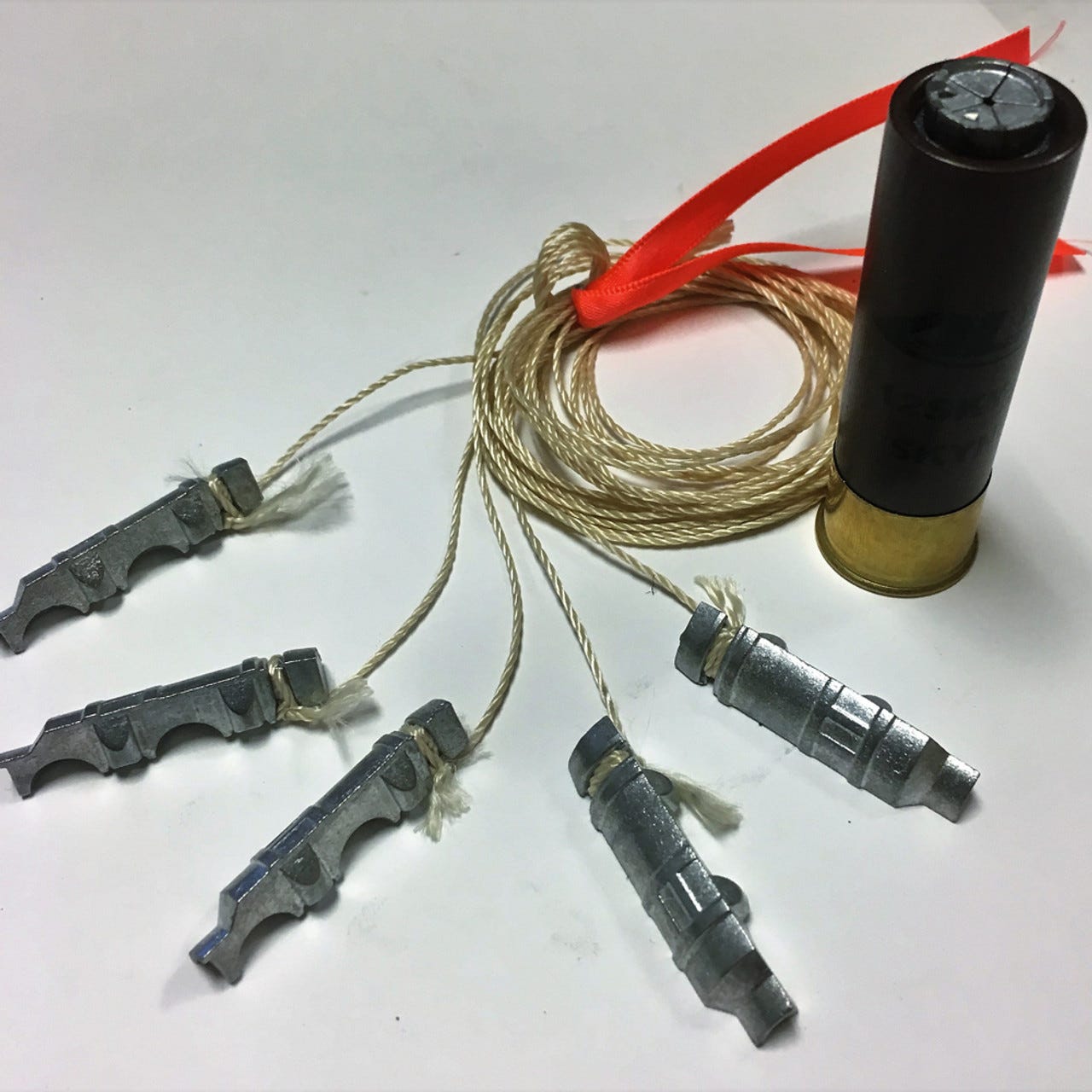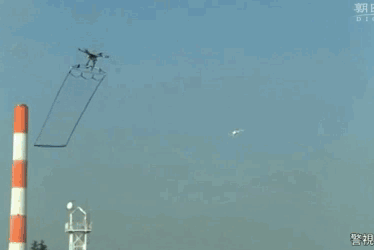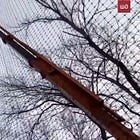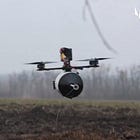Catching Drones in Giant Nets
Launch a net at a drone—to get its propellers in a tangle.
Your enemy is flying a little quadcopter drone at you. How can you shoot it down?
As we have covered in previous weeks:
It is difficult to hit a small drone with a rifle or shotgun.
The latest military drones are resistant to radio jamming.
This week, we’ll cover an exciting new anti-drone weapon: nets that tangle a drone’s propellers and cause it to crash.
How to capture a drone with a net
There are several ways to deploy a net to defeat a drone:
1. Net projectiles
A net projectile is a payload launched from a shotgun, grenade launcher, or cannon. Once launched, it expands into a net designed to get caught in the propellers of an enemy drone.
Net projectiles can also contain parachutes, which can slowly lower a captured drone without damaging it or surrounding people and property.
Some net projectiles can be launched from existing weapons:
The US Army patented a net projectile that launches from a standard 40-millimeter grenade launcher.
SKYNET is a brand of 12-gauge shotgun ammunition that expands into a 5-foot wide net when shot.

Other net systems rely on custom launchers. The UK firm OpenWorks sells a variety of net projectiles that can be used in their shoulder-mounted, vehicle-mounted, or fixed-position launchers.
2. Interceptor drones
An interceptor drone is a drone that you fly to chase down an approaching enemy drone.

In 2015, Tokyo police began trials of a six-rotor interceptor drone with a 6-square-meter net designed to entangle enemy drones.
More recently, the Russians have deployed anti-drone nets in the Russia-Ukraine War. Roy on X published the video below of a Russian anti-drone net launcher entangling another drone.
Net-wielding interceptor drones are also sold on the private market.
A handful of defense firms have their own interceptor drones for sale—such as DroneHunter F700 by Fortem Technologies and DroneCatcher by Delft Dynamics.
Advantages of nets
Compared to other anti-drone weapons, nets have numerous advantages:
Low cost. A net costs almost nothing1 when compared to interceptor missiles or radio jammers.
No radio disruption. Unlike a radio jammer, a net does not harm your ability to communicate via radio.
Less lethal to humans. A bullet or rocket shot at a drone could miss and accidentally kill a nearby person. Net projectiles are designed to be less lethal—especially if they include parachutes2.
Fire safety. Compared to a bullet or a rocket, a net is less likely to make the enemy drone catch fire or explode.
Minimal shrapnel risk. Nets are unlikely to make a drone shatter into a thousand pieces. Nets with built-in parachutes can land a captured drone completely intact for future forensic analysis.
Drones that are resistant to nets
While nets are effective against today’s drones, net-resistant drones are already on the horizon.
Here are a few ways to build a drone that foils nets:
1. Propeller protection
It is simple to armor a drone’s propellers so that they won’t be caught in a net.
The Ukrainians have deployed drones with wire meshes on top3. The mesh protects the top side of a Ukrainian drone from Russian interceptor drones that fly above and launch a net downwards.
2. No propellers at all

The typical anti-drone net is designed for quadcopters with multiple propellers sticking upwards.
Nets are not as effective at capturing other aircraft, like:
Gliders, kites, and balloons. They don’t have propellers for a net to tangle, but a net might be able to down them just by adding weight.
Fixed-wing aircraft. A fixed-wing drone with only one propeller in front—instead of multiple propellers on top—will be harder to capture in a net.
Jet and rockets. A drone, airplane, rocket, or missile that flies using a jet engine or rocket engine will be almost impossible to capture in a net.
3. Fly bigger, faster, or higher
Anti-drone nets are only effective for drones up to a certain size. Larger aircraft are unlikely to be captured by a net.
Net launchers and interceptor drones also have a maximum altitude above which an enemy drone could fly above.
Conclusion
Nets are an extraordinarily effective way to capture a small drone. They are cheap, cause minimal collateral damage, and can be quickly launched from a gun or an interceptor drone.
At Soundryx, we predict that nets will likely remain effective against small drones—at least until drones with anti-net propeller protection become common.
But nets are not effective against aircraft that are large, fast, or propeller-less aircraft. We’ll explore ways to take down these aircraft in the coming weeks.
Further reading
For example, as of May 2025, the online retailer Net World Sports sells a drone containment net for about $16 per meter, for a net that is 3 millimeters thick and 3 meters tall.
Note that net projectiles are typically fired from their launcher at a great velocity, which still makes the projectile dangerous to shoot directly at a person—even if the projectile has a parachute. If the projectile is shot into the air, it is less likely to harm a person when it falls out of the sky—especially if it has a parachute.
This discovery of Ukrainian anti-net mesh protection originates from the Russian Telegram channel Техник БПЛА🇷🇺 and was surfaced by Roy on X.




